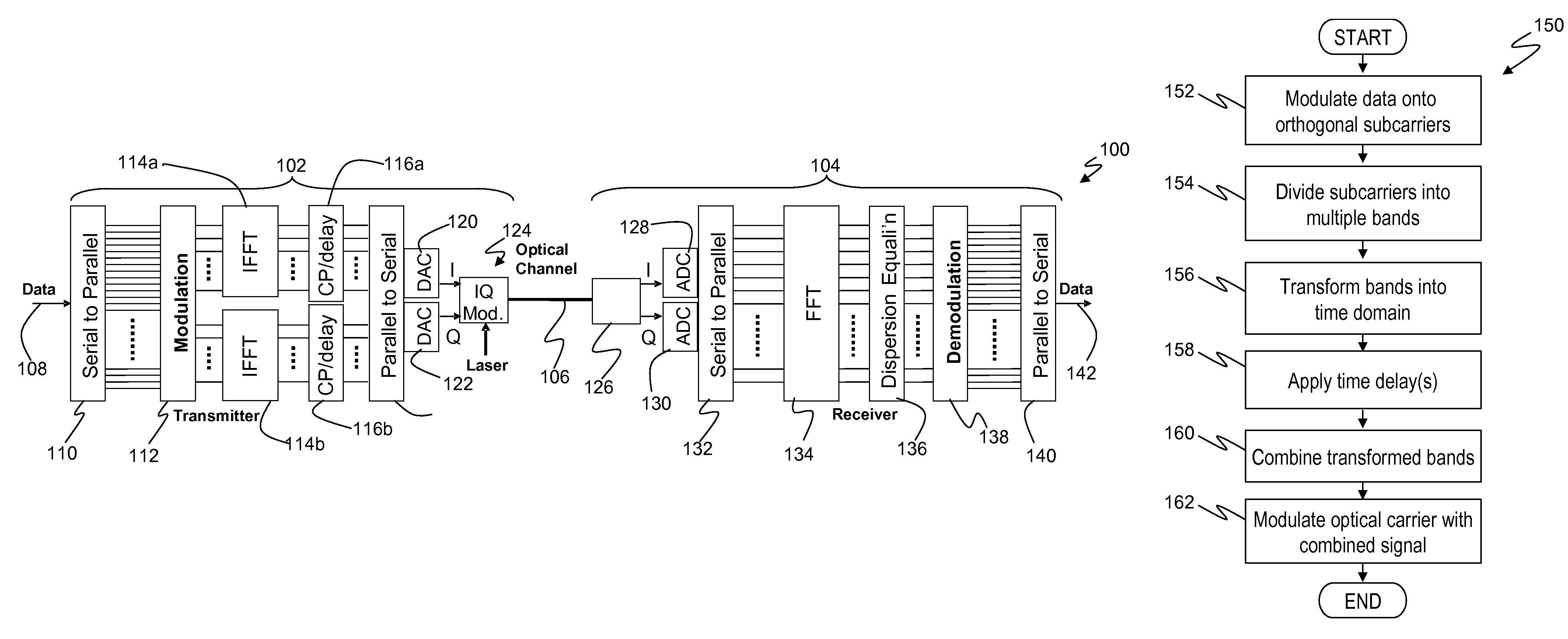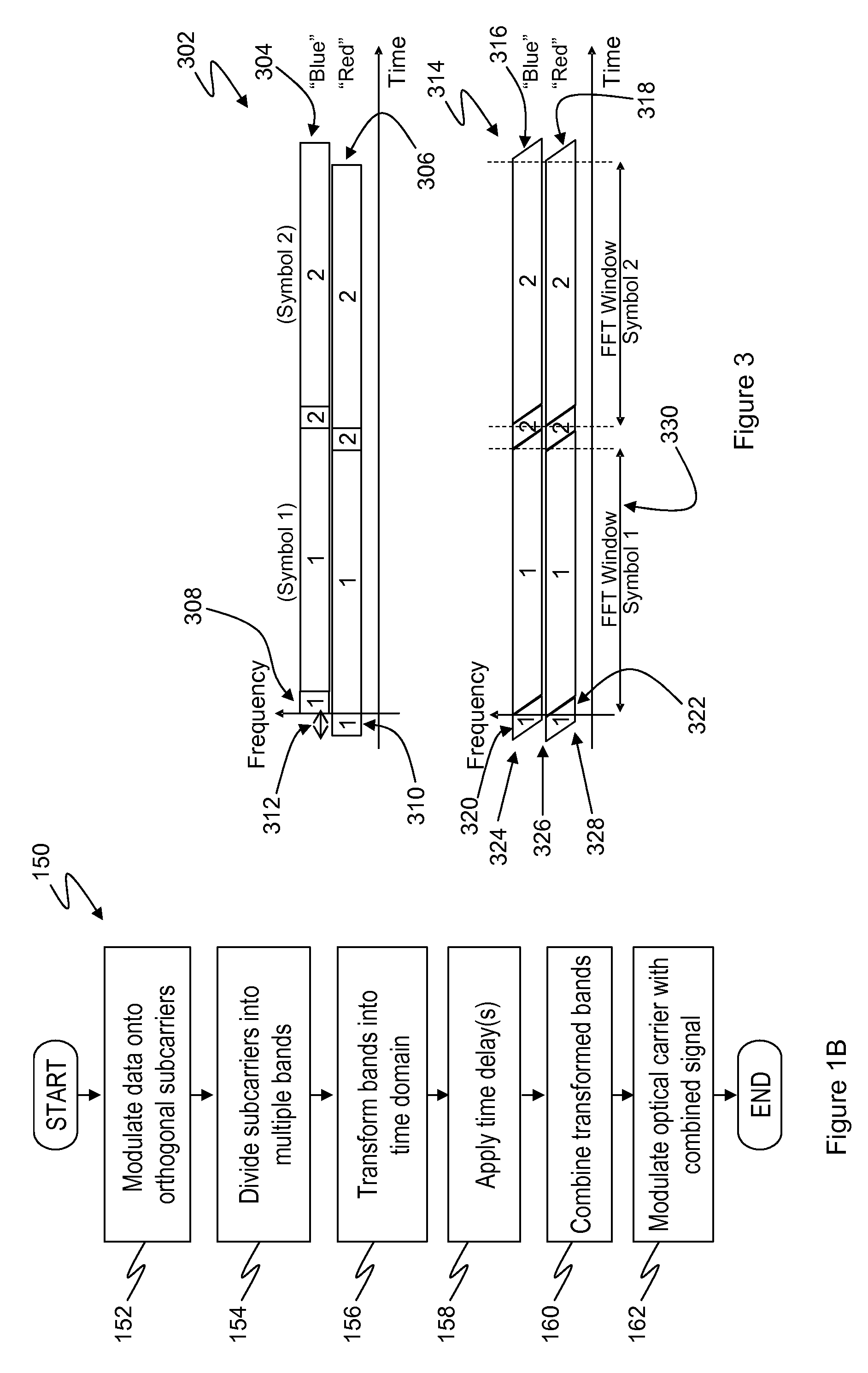Optical OFDM transmission with improved efficiency
a transmission efficiency and optical technology, applied in the field of optical communication, can solve the problems of inability to control the system designer's required guard interval, the reduction in transmission efficiency is negligible, and the deployment of ofdm within optical systems may not be easy to achiev
- Summary
- Abstract
- Description
- Claims
- Application Information
AI Technical Summary
Benefits of technology
Problems solved by technology
Method used
Image
Examples
Embodiment Construction
[0037]FIG. 1 illustrates schematically a system 100 for communicating digital information over a dispersive optical channel, according to a preferred embodiment of the present invention. The exemplary system 100 includes transmission apparatus 102 and receiving apparatus 104, which for convenience are more generally referred to herein as the “transmitter” and the “receiver” respectively.
[0038]The transmitter 102 communicates with the receiver 104 via optical channel 106, which generally exhibits linear optical dispersion, including chromatic dispersion and polarisation mode dispersion. The optical channel 106 may also exhibit non-linear transmission characteristics. While embodiments of the present invention may be employed in systems which also incorporate non-linear compensation methods, such as those disclosed in International Application Publication No. WO 2008 / 075085, the invention is directed primarily to improving compensation for linear dispersion processes, and chromatic di...
PUM
 Login to View More
Login to View More Abstract
Description
Claims
Application Information
 Login to View More
Login to View More - R&D
- Intellectual Property
- Life Sciences
- Materials
- Tech Scout
- Unparalleled Data Quality
- Higher Quality Content
- 60% Fewer Hallucinations
Browse by: Latest US Patents, China's latest patents, Technical Efficacy Thesaurus, Application Domain, Technology Topic, Popular Technical Reports.
© 2025 PatSnap. All rights reserved.Legal|Privacy policy|Modern Slavery Act Transparency Statement|Sitemap|About US| Contact US: help@patsnap.com



